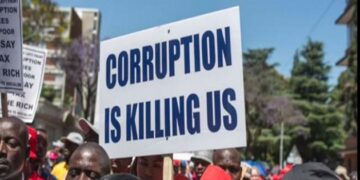A September 2024 study by Stanley De Coster, Yannick Veilleux-Lepage, Amarnath Amarasingam and Tahir Abbas, published by Perspectives on Terrorism, titled: ‘Uncovering the Bias and Prejudice in Reporting on Islamist and Non-Islamist Terrorist Attacks in British and US Newspapers,’ has unveiled, through empirical analysis, “systematic biases in how major US and UK print media outlets portray terrorist attacks carried out by Muslim versus non-Muslim perpetrators.”
The study employed computational text analysis of a corpus of 10,223 newspaper articles covering 32 high-casualty attacks publishedin The New York Times, The Washington Post, USA Today, The Guardian, The Daily Mail, and The Telegraph from 2003 to 2018. The final dataset included 7,349 articles about attacks perpetrated by Muslims and 2,874 about attacks perpetrated by non-Muslims.
It revealed two “two key disparities” – Firstly, it said: “Muslim attacks tend to elicit more negatively valenced emotional language, which may cultivate fear and stigmatisation in Muslim communities,” and secondly, it said: “Such attacks garner greater sustained media attention over time compared to those committed by non-Muslims, which exhibit a sharper decline in coverage beyond the immediate aftermath.”
According to the study, “These differences in framing and agenda-setting illuminate how media representations can contribute to socially constructing particular forms of ideological violence as more existentially threatening.”
The Abstract of the study noted that by empirically documenting biases in terrorism coverage, it seeks to raise “critical concerns about journalistic objectivity and the media’s role in perpetuating prejudicial narratives that enable policies targeting Muslims while minimising other security threats.”
The study said its “findings underscore the urgency of promoting more responsible reporting practices and inclusive public discourse surrounding extremism and its underlying drivers.”
The study quoted the Global Terrorism Index as having reported a 250 per cent increase in far-right attacks in North America, Oceania, and Western Europe since 2014, with deaths increasing by 709 per cent during the same period in 2020.
“Overall, attacks carried out by Muslim perpetrators had 4,813 total casualties (i.e. dead or wounded), while those carried out by non-Muslims had a total of 1,299 casualties. Specifically, Muslim perpetrators caused the deaths of 698 people and wounded 4,115 within Western Europe, the United States, and Canada, whereas non-Muslim terrorists caused the deaths of 241 people and wounded another 1,058,” the study noted.
Meanwhile, it contrasted: “Terror-related incidents carried out by Muslim extremists have decreased in the West.” It pointed out that “despite these trends, mainstream media outlets have tended to cover Muslim-perpetrated terrorist attacks more negatively than those committed by non-Muslims.” (Paige Pascarelli, “Ideology à la carte: Why Lone Actor Terrorists Choose and Fuse Ideologies,” Lawfare https://www.lawfaremedia.org/article/ideology-%c3%a0-la-carte-why-lone-actor-terrorists-chooseand-fuse-ideologies (2016))
It referenced a recent study (Christopher A. Bail, Terrified: How Anti-Muslim Fringe Organizations Became Mainstream (Princeton University Press, 2014); Erin M. Kearns and Amarnath Amarasingam, “How News Media Talk About Terrorism: What the Evidence Shows,” Just Security, April 5, 2019, https://www.justsecurity.org/63499/ how-news-media-talk-about-terrorism-what-the-evidence-shows/), which reported that “attacks carried out by Muslims were 4.5 times more likely to receive media coverage than attacks committed by non-Muslims, demonstrating a striking difference in media attention depending on the identity of the perpetrator.”
The study suggested that “in addition to the difference in reporting frequency previously highlighted by other scholars, the reporting of terrorist attacks committed by Muslim and non-Muslim perpetrators differs in two other regards: Firstly, terrorist attacks by non-Muslims tend to receive more intensive coverage in the first days after the attack, while Muslim-perpetrated attacks captivate media attention for a longer time post-attack.”
Secondly, it said, “When describing an attack by a non-Muslim, newspaper articles frequently use language with fewer negative connotations than when describing an attack by a Muslim perpetrator.”
The study pointed out that “with the pervasiveness of Islamophobia in the post-9/11 period, there is a tendency to describe Muslim events and lives in Islamophobic terms, including in the media.”
According to the study, the framing of terrorism and its perpetrators has also been a key concern in critical terrorism studies, religious studies, and postcolonial literature, indicating that “scholars in religious studies have examined how media representations can contribute to the ‘othering’ of Islam and Muslims.”
It cited Ewards Said’s seminal work, which highlights “how reductive Orientalist tropes depicting Muslims as uncivilised and threatening have long pervaded Western media and political discourse.”
For instance, the study reported that in the British press, reportage on Islam often “reproduces a narrow set of stereotypes fixated on violence and cultural differences,” noting: “Such patterns construe Muslims as a ‘suspect community’ and can fuel Islamophobia.”
“The figure of the Muslim terrorist has become a key foil against which Western nations assert their supposed moral superiority,” the report indicated, suggesting: “This framing serves to justify military interventions abroad and the erosion of civil liberties at home, particularly for Muslims and those racialised as Muslims.”
“Critical terrorism studies, in turn, challenge the field’s traditionally state-centric orientation to interrogate terrorism as a discursive category and tool of the powerful. ‘Terrorism’ is not a neutral descriptor, but a label selectively applied to delegitimise certain acts of violence while sanctioning others,” added the study, adding: “Critics have critiqued the disproportionate application of the ‘terrorist’ label to Muslims, even when other groups commit more attacks, as reflecting an Islamophobic bias.”
The study acknowledged that the media plays “a significant role in shaping public perceptions and policy responses to terrorist incidents,” and, thus, “By selectively allocating attention to certain attacks, the media can signal to audiences that these events are worthy of concern and in need of solutions.”
It said the concept of “focusing events” is useful for understanding how “dramatic, violent incidents like terrorist attacks can concentrate public attention in ways that create openings for policy change.” However, it noted, “not all terrorist attacks receive equal coverage,” noting: “Several factors have been shown to influence both the amount and nature of media attention, including perpetrator nationality, the number and identity of casualties, and crucially, the perpetrator’s perceived religious affiliation.”
The study reviewed “a robust body of scholarship” which it said “documents pervasive negative biases in Western media representations of Muslims and Islam, particularly in the context of terrorism and violence,” adding: “These stereotypical portrayals have been linked to increased public support for policies that disproportionately target and harm Muslims.”
Also, the study said the “tone and emotionality of coverage appear to be a key mechanism driving these effects. The more threatening news coverage of terrorism elicits greater anxiety and hawkish policy attitudes among viewers,” noting: “Major American newspapers applied the ‘terrorism’ label inconsistently when perpetrators were not linked to Islam, suggesting that the term itself carries an implicit Muslim association.”
The study also unearthed “a qualitative difference” in how media depict Muslims within the US (as largely peaceful) versus abroad (as dangerous), “indicating that the geographic context of attacks may also shape representations.”
“The expectation that the identity of the perpetrator will influence the tone and duration of media coverage is rooted in the broader dynamics of media framing and agenda-setting,” the study mentioned, stressing: “In the context of terrorism, the media’s framing choices can powerfully influence how the public understands and evaluates the nature of the threat, the groups involved, and the appropriate societal responses.”
Research, the study cited, has “consistently shown that media framing of Muslims and Islam in Western contexts has been predominantly negative and stereotypical, often focusing on themes of violence, extremism, and cultural otherness,” warning: “This pervasive pattern of representation can create an implicit association between Islam and terrorism in the public imagination, leading to heightened threat perceptions and support for punitive policies.”
From this perspective, the study said, “The framing of a terrorist attack by a Muslim perpetrator as part of a broader narrative of Islamic extremism and civilisational conflict amplifies perceptions of fear and risk.” In contrast, it points out, “terrorist attacks committed by non-Muslim perpetrators, especially non-white perpetrators, are framed as isolated incidents or as the result of individual pathology, rather than as a systemic threat.”
This differential framing, the study cautioned, “Can lead to a lower sense of collective danger and a quicker dissipation of public attention.” It highlighted that: “The perpetrator’s identity thus serves as a key heuristic cue that journalists and editors use, whether consciously or unconsciously, to guide their framing choices and determine the newsworthiness and salience of a particular attack. These framing dynamics, in turn, shape the media’s agenda-setting function by influencing the relative prominence and duration of coverage given to various attacks. In line with agenda-setting theory, the amount and prominence of coverage devoted to an issue or event is a strong indicator of its perceived importance and can significantly influence public attitudes and policy priorities. By providing more extensive and prolonged coverage of attacks carried out by Muslim perpetrators, the media may heighten the salience of Islamic extremism as a political issue and maintain public attention on the perceived threat of Muslim violence.”
Conversely, the study suggested that “by devoting less sustained coverage to attacks by non-Muslim perpetrators, the media may dampen the sense of urgency around other forms of extremist violence and limit public pressure for a robust policy response.”
Crucially, it noted, “these framing and agenda-setting processes are not necessarily the result of deliberate bias on the part of individual journalists or news organisations. Rather, they reflect how cultural stereotypes, institutional routines, and market imperatives shape media content.”
Nevertheless, the study noted that “by systematically privileging certain narratives and voices over others, media coverage can contribute to the reproduction of dominant ideologies and power structures, with significant implications for public attitudes and policy outcomes. Through this theoretical lens, examining the tone and duration of media coverage of terrorist attacks can provide valuable insights into how the perpetrator’s identity shapes the social construction of risk and the perceived urgency of different forms of extremist violence. It can also throw light on the role of the media in reinforcing or challenging dominant narratives about Islam, terrorism, and national security.”
In terms of coverage duration, the study found that terrorist attacks, while rare, “tend to attract disproportionate media attention relative to other violent crimes.” It cited the 9/11 attacks, in particular, as a “made-for-television” event that commanded an “exceptional degree of live, repeated coverage,” underscoring that the concept of an “issue attention cycle” has been applied to media coverage more broadly, suggesting a pattern whereby the salience of events spikes and then gradually declines.
However, it noted, “the rate of this decline differs across incidents in ways that may depend on perpetrator identity.”
Justifying its focus on the emotional tone and duration of media coverage, the study argued that “these variables serve as important indicators of the media’s underlying orientations and can have significant impacts on public perceptions and attitudes. The emotional tone of media coverage, as reflected in the use of language evoking fear, anger, or other affective responses, provides insight into the implicit frames and narratives that journalists and editors employ in their reporting.”
“Moreover, the emotional tone of coverage has been shown to have direct effects on audience reactions and policy preferences. Experimental research has demonstrated that exposure to news stories that evoke fear and anger can lead to increased support for punitive and restrictive policies, such as military intervention, surveillance, and immigration restrictions. The duration of media coverage, as measured by the number of articles published over time and the rate of decline in coverage, serves as an indicator of the perceived newsworthiness and salience of different terrorist attacks. As agenda-setting theory posits, the amount and persistence of media attention devoted to an issue is a key determinant of its prominence on the public agenda. When the media provides sustained coverage of an attack over an extended period, it signals to audiences that the event is of high significance and warrants continued concern and engagement. Conversely, when coverage of an attack quickly dissipates, it suggests that the incident is of lesser importance and does not require prolonged public attention or policy action. If attacks by Muslim perpetrators consistently receive longer and more persistent coverage compared to similar attacks by non-Muslim perpetrators, it may indicate a media bias that privileges certain narratives of threat and contributes to the disproportionate focus of public attention on the spectre of Islamic extremism. Such disparities in coverage duration can have important consequences for policy priorities, resource allocation, and the overall shape of public discourse on terrorism and security. Examining the intersection of emotional tone and coverage duration further allows for a more nuanced understanding of how these dimensions of media coverage may interact to shape public perceptions over time. The study stressed that, if attacks by Muslim perpetrators are both framed in more emotionally charged terms and receive more sustained coverage compared to attacks by non-Muslim perpetrators, it suggests a compounding effect that may amplify public fears and policy responses in ways that disproportionately target Muslim communities.






























